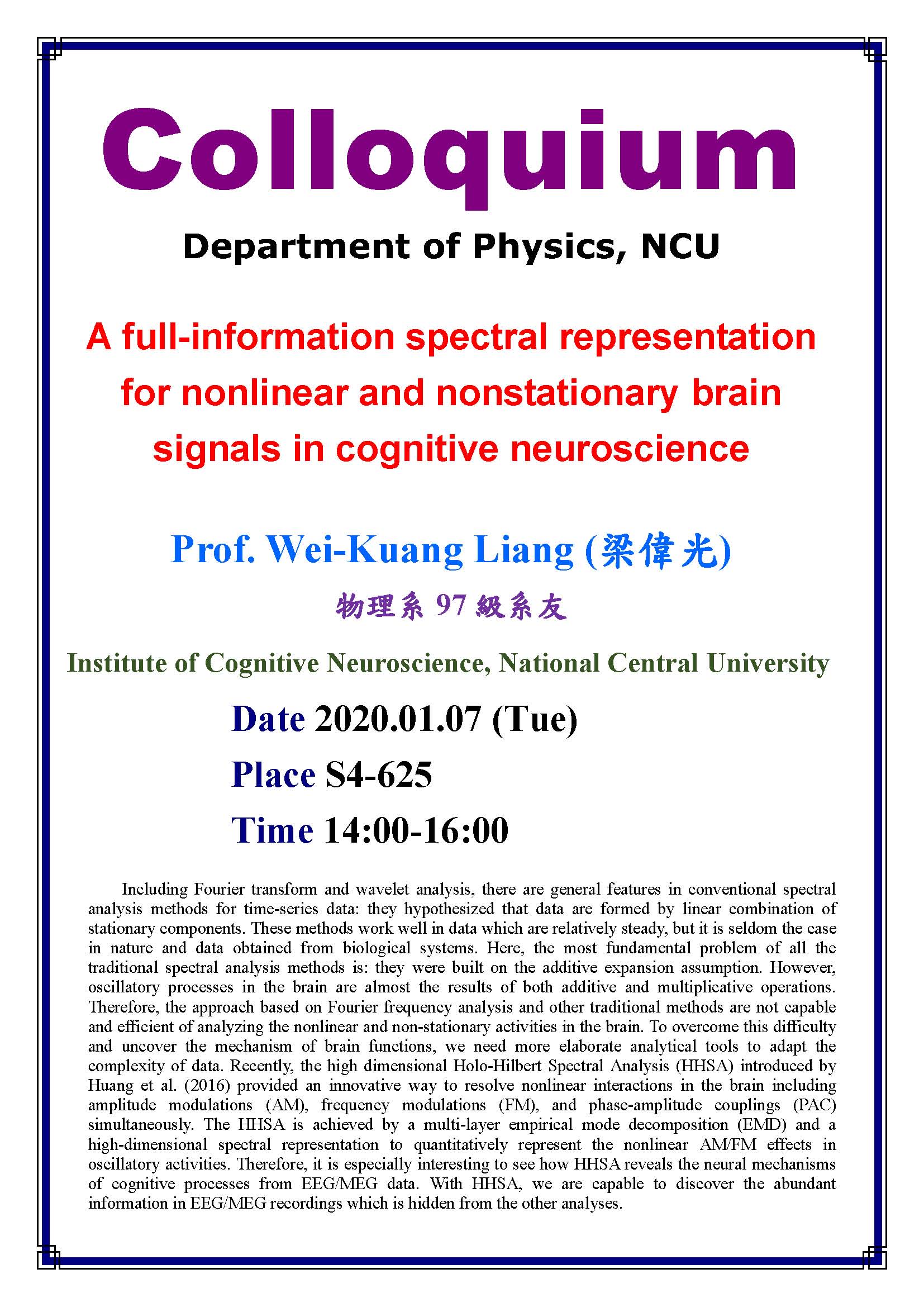 Colloquium
Colloquium
Department of Physics, NCU
A full-information spectral representation for nonlinear and nonstationary brain signals in cognitive neuroscience
Prof. Wei-Kuang Liang (梁偉光)
物理系97級系友
Institute of Cognitive Neuroscience, National Central University
Date 2020.01.07 (Tue)
Place S4-625
Time 14:00-16:00
Including Fourier transform and wavelet analysis, there are general features in conventional spectral analysis methods for time-series data: they hypothesized that data are formed by linear combination of stationary components. These methods work well in data which are relatively steady, but it is seldom the case in nature and data obtained from biological systems. Here, the most fundamental problem of all the traditional spectral analysis methods is: they were built on the additive expansion assumption. However, oscillatory processes in the brain are almost the results of both additive and multiplicative operations. Therefore, the approach based on Fourier frequency analysis and other traditional methods are not capable and efficient of analyzing the nonlinear and non-stationary activities in the brain. To overcome this difficulty and uncover the mechanism of brain functions, we need more elaborate analytical tools to adapt the complexity of data. Recently, the high dimensional Holo-Hilbert Spectral Analysis (HHSA) introduced by Huang et al. (2016) provided an innovative way to resolve nonlinear interactions in the brain including amplitude modulations (AM), frequency modulations (FM), and phase-amplitude couplings (PAC) simultaneously. The HHSA is achieved by a multi-layer empirical mode decomposition (EMD) and a high-dimensional spectral representation to quantitatively represent the nonlinear AM/FM effects in oscillatory activities. Therefore, it is especially interesting to see how HHSA reveals the neural mechanisms of cognitive processes from EEG/MEG data. With HHSA, we are capable to discover the abundant information in EEG/MEG recordings which is hidden from the other analyses.